I
Showing 13–23 of 23 results
-
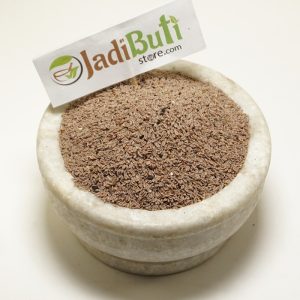

Isabgol Beej – इसबगुल बीज – Flea Seed – Plantago Ovata
₹79.00 – ₹535.00Quick ViewIsabgol Beej – इसबगुल बीज – Flea Seed – Plantago Ovata.
Isabgol Name in different languages:
Isabgol English Name : Psyllium, Flea Seed, lspaghula Seed
Isabgol Hindi Name : lsabgol, Isapgol, Isapghul, Isarghol, Ispaghul
Isabgol Latin name : Plantago ovata Forsk.
Isabgol Urdu Name : Isabghol, Aspaghol (Seeds), Bhusi Isabghol (Husk)
Isabgol Sanskrit Name : Snigdhajira, Ashwagolam
Isabgol Arabic Name : Bazrqutoona, Bizr al-qutoona, Luqmat al-na’ja
Isabgol Bengali Name : Isabgul, Eshopgol
Isabgol Chinese Name : Ch’-Ch’ientzu
Isabgol French Name : Graines de Psyllium
Isabgol Gujarati Name : Uthamujeerun, Isaphgol
Isabgol Kannada Name : Issabagolu
Isabgol Kashmiri Name : Ismogul, Satismogul
Isabgol Marathi Name : Isapghol
Isabgol Persian Name : lsabghol, Isparzah
Isabgol Punjabi Name : Isapghol
-


Isabgol Bhusi – इसबगोल भूसी – Plantago Ovata – Psyllium Husk
₹150.00 – ₹1,015.00Quick ViewIsabgol Bhusi – इसबगोल भूसी – Plantago Ovata – Psyllium Husk.
Isabgol Name in different languages:
Isabgol English Name : Psyllium, Flea Seed, lspaghula Seed
Isabgol Hindi Name : lsabgol, Isapgol, Isapghul, Isarghol, Ispaghul
Isabgol Latin name : Plantago ovata Forsk.
Isabgol Urdu Name : Isabghol, Aspaghol (Seeds), Bhusi Isabghol (Husk)
Isabgol Gujarati Name : Uthamujeerun, Isaphgol
Isabgol Arabic Name : Bazrqutoona, Bizr al-qutoona, Luqmat al-na’ja
Isabgol Bengali Name : Isabgul, Eshopgol
Isabgol Chinese Name : Ch’-Ch’ientzu
Isabgol French Name : Graines de Psyllium
Isabgol Kannada Name : Issabagolu
Isabgol Kashmiri Name : Ismogul, Satismogul
Isabgol Marathi Name : Isapghol
Isabgol Persian Name : lsabghol, Isparzah
Isabgol Punjabi Name : Isapghol
Isabgol Sanskrit Name : Snigdhajira, Ashwagolam
-
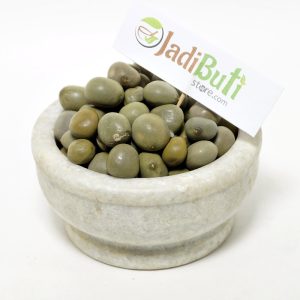
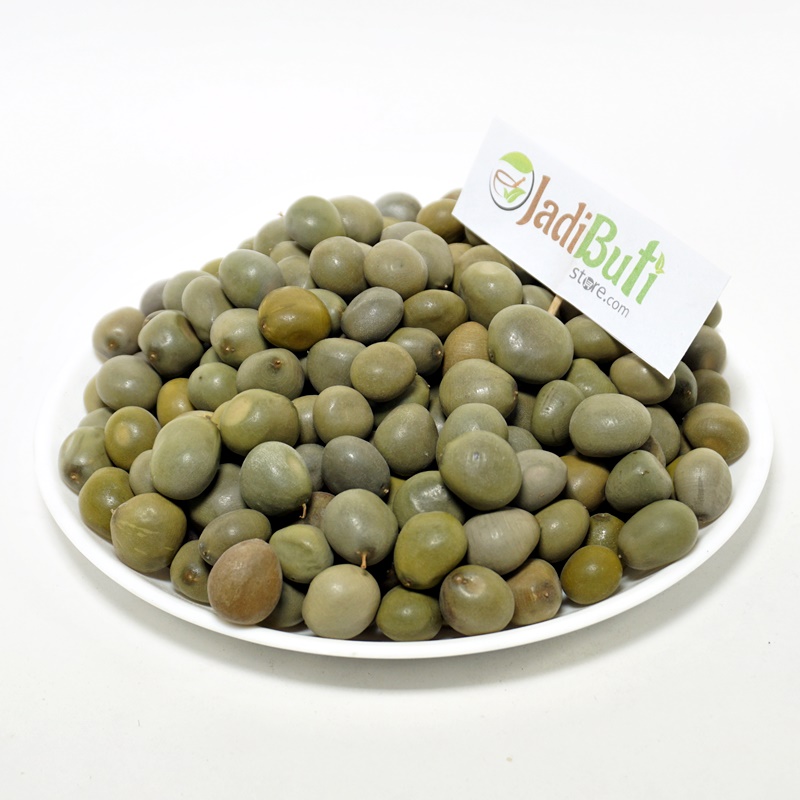
Karanj – करंज – Indian Beech – Pongamia glabra
₹130.00 – ₹1,020.00Quick ViewKaranj | Indian Beech
Scientific Name : Pongamia pinnata or Millettia pinnata
Ayurvedic classification of Karanj (Pongamia pinnata):
Ayurvedic Classification Description Rasa (taste) Bitter and astringent Guna (qualities) Light, dry, sharp Virya (potency) Cooling Vipaka (post-digestive effect) Pungent Dosha effect Balances Pitta and Kapha doshas Karma (actions) Antiseptic, anti-inflammatory, astringent, analgesic, purgative, and diuretic Dhatu (tissue) affinity Works primarily on the blood, muscle, and fat tissues Srotas (channel) affinity Works primarily on the circulatory, urinary, and digestive channels Prabhava (special effect) Helps to heal wounds and skin conditions Active Compound Benefits Pongamol Antioxidant, anti-inflammatory, and anti-cancer properties Karanjin Antimicrobial, anti-inflammatory, and insecticidal properties Glabrin Antioxidant and anti-inflammatory properties Flavonoids Antioxidant, anti-inflammatory, and immune-boosting properties Triterpenoids Anti-inflammatory, antiviral, and immune-boosting properties Fatty acids Antioxidant and anti-inflammatory properties -


Majith – Manjistha – Indian Madder – Rubia cordifolia
₹140.00 – ₹1,170.00Quick ViewManjistha is classified as a bitter, astringent, sweet, and cooling herb. It is believed to have a balancing effect on the Pitta and Kapha doshas, while increasing Vata dosha.
.
Ayurvedic classification of Manjistha (Rubia cordifolia):
Ayurvedic Classification Description Rasa (taste) Astringent, bitter, and sweet Guna (qualities) Heavy, dry, and cold Virya (potency) Cooling Vipaka (post-digestive effect) Sweet Dosha effect Pacifies Pitta and Kapha doshas Karma (actions) Blood purifier, detoxifying, diuretic, anti-inflammatory, and antioxidant Dhatu (tissue) affinity Works primarily on the blood and lymphatic tissues Srotas (channel) affinity Works primarily on the circulatory and lymphatic channels Prabhava (special effect) Purifies and cools the blood, supports healthy skin, and promotes overall detoxification Active compounds and their benefits found in manjistha (Rubia cordifolia):
Active Compound Benefits Anthraquinones (alizarin, purpurin, and munjistin) Anti-inflammatory, antioxidant, and antimicrobial properties Tannins Anti-inflammatory, antioxidant, and wound-healing properties Flavonoids (quercetin, kaempferol, and rutin) Anti-inflammatory, antioxidant, and anti-cancer properties Xanthones Anti-inflammatory, antioxidant, and anti-cancer properties Glycosides Cardio-protective, hepatoprotective, and immune-boosting properties Betaine Liver-protective and anti-inflammatory properties -
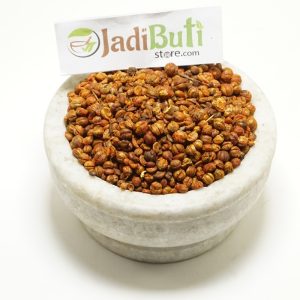
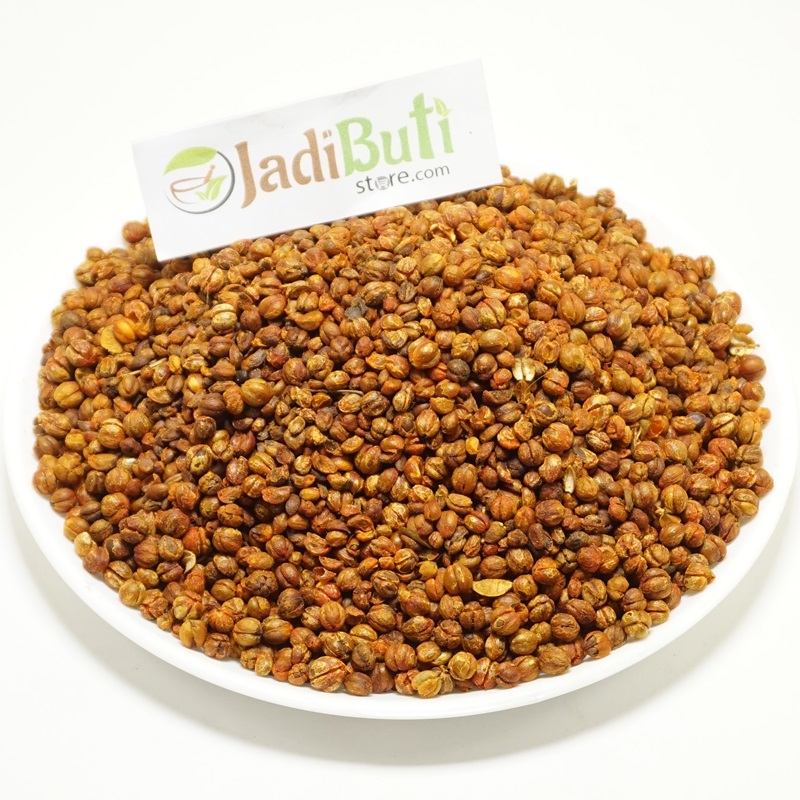
Malkangni – मालकांगनी – Black oil Tree – Celastrus paniculatus
₹760.00 – ₹6,290.00Quick ViewMalkangni seeds, Intellect Tree seeds
Scientific name: Celastrus paniculatus | Plant family: Celastraceae
Ayurvedic classification: | Parts used: Seeds
****** ***** Rasa (Taste) Tikta (Bitter), Katu (Pungent) Guna (Quality) Laghu (Light), Tikshna (Sharp) Virya (Potency) Ushna (Hot) Vipaka (Post-digestive effect) Katu (Pungent) Dosha Effect Balances Vata and Kapha doshas, increases Pitta dosha Action (Karma) Medhya (Nervine tonic), Vrushya (Aphrodisiac), Balya (Increases strength), Deepana (Digestive stimulant), Pachana (Digestive), Shothahara (Anti-inflammatory), Sangrahi (Astringent), Hridya (Heart tonic) -
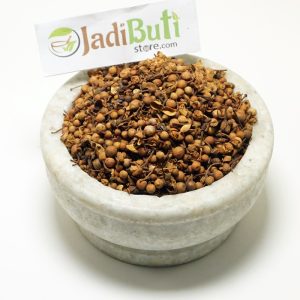

Nagkesar – नागकेसर – Iron Wood Tree – Mesua ferrea
₹280.00 – ₹2,270.00Quick View| Nagkesar |
| Botanical Name: Mesua ferrea |
Common Names: Ironwood tree, Nagchampa, Ceylon ironwood Properties: Astringent, bitter, pungent, cooling Uses: Anti-inflammatory, digestive health, skin health, respiratory health, menstrual health, pain relief Precautions: May interact with certain medications and may cause gastrointestinal upset and allergic reactions in some individuals. Consult a healthcare practitioner before use. Nagkesar seeds have the following properties:
- Rasa (taste): Astringent, bitter, pungent
- Virya (potency): Cooling
- Vipaka (post-digestive effect): Pungent
- Guna (qualities): Light, dry, sharp, penetrating
- Dosha (effect on humors): Balances Pitta and Kapha, may aggravate Vata
-


Neem Patta – नीम पत्ता – Indian Lilac – Melia azadirachta
₹80.00 – ₹650.00Quick View| Indian Lilac Leaves |
| Botanical Name: Azadirachta indica |
Common Names: Neem, Nimtree, Margosa Properties: Cooling, bitter, blood-purifying Uses: Skin health, dental health, digestive health, immune system support, respiratory health, blood sugar control, reproductive health, insect repellent, pain relief, hair health Precautions: May interact with certain medications and may not be suitable for everyone. Consult a healthcare practitioner before use.
-

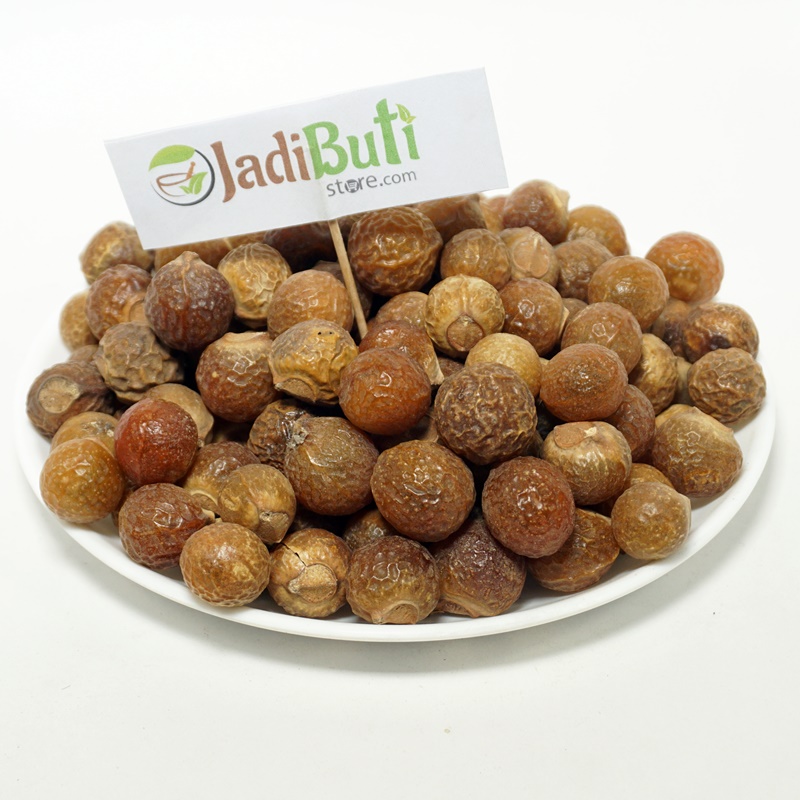
Reetha – Ritha – Soap Nut – Indian soapberry
₹80.00 – ₹625.00Quick ViewReetha | Indian Soapberry
Ayurvedic classification of Indian Soapberry (Sapindus Mukorossi):
Ayurvedic Classification Description Rasa (taste) Astringent, bitter, and sweet Guna (qualities) Light, dry, and sharp Virya (potency) Cooling Vipaka (post-digestive effect) Sweet Dosha effect Pacifies Pitta and Kapha doshas Karma (actions) Cleansing, purifying, detoxifying, anti-inflammatory, antifungal, and insecticidal Dhatu (tissue) affinity Works primarily on the skin and blood tissues Srotas (channel) affinity Works primarily on the digestive, respiratory, and urinary channels Prabhava (special effect) Natural surfactant, making it useful as a soap or cleanser Active compounds and their benefits found in Indian Soapberry (Sapindus Mukorossi):
Active Compound Benefits Saponins Natural surfactants that provide cleaning and foaming properties in soap and shampoo products Sapindoside A/B Anti-inflammatory and anti-cancer properties Quercetin Antioxidant and anti-inflammatory properties Kaempferol Anti-inflammatory and anti-cancer properties Gallic acid Antioxidant and anti-inflammatory properties Triterpenoids Antioxidant and anti-inflammatory properties Flavonoids Anti-inflammatory, antimicrobial, and anti-cancer properties -

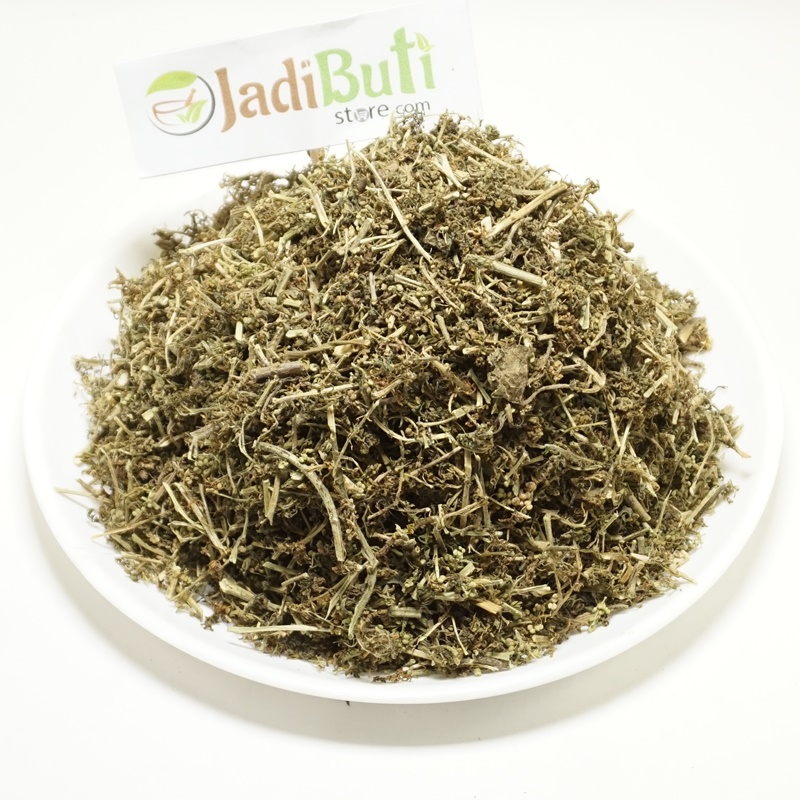
Shahtara – शाहतारा – Common Fumitory – Fumaria officinalis
₹320.00 – ₹2,595.00Quick ViewCommon Fumitory, Shahtra | Botanical Name: Fumaria officinalis
Family: Papaveraceae | Parts Used: Aerial parts
Ayurvedic Properties:
- Rasa (Taste): Bitter, Astringent
- Guna (Quality): Light, Dry
- Virya (Potency): Cooling
- Vipaka (Post-Digestive Effect): Pungent
- Doshas: Pacifies Pitta and Kapha doshas, may increase Vata in excess
Ayurvedic Uses:
- Supports liver health
- Improves skin health
- Improves digestion
- Relieves respiratory issues
- Purifies blood
- Boosts immunity
- Improves eye health
- Supports urinary health
- Relieves joint pain and inflammation
- Calms the mind
-
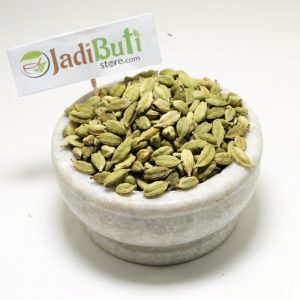
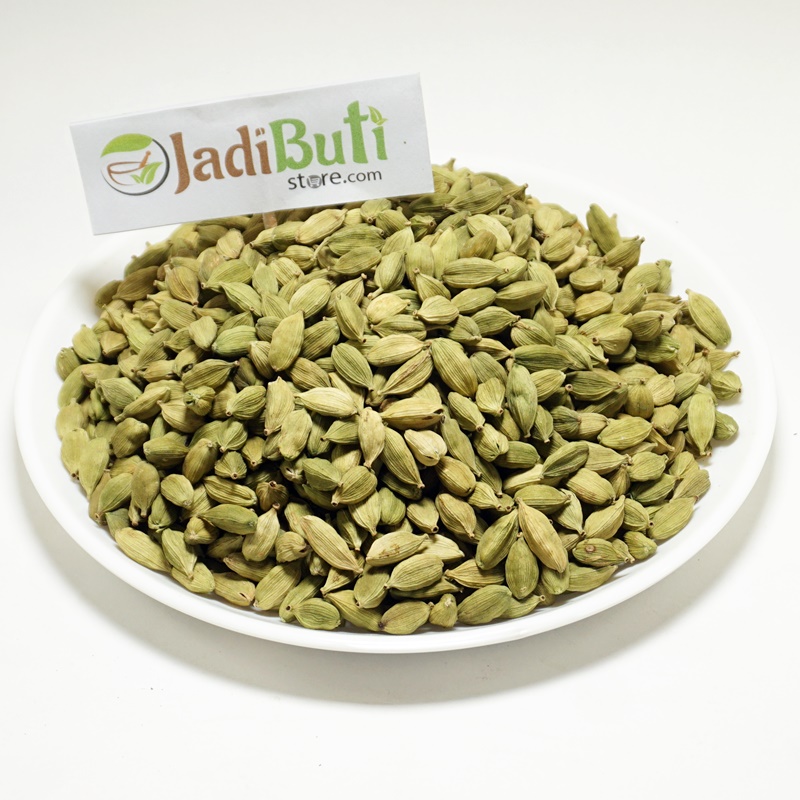
Small Elaichi -छोटी इलाइची – Green Cardmom – ELETTARIA CARDAMOMUM
₹680.00 – ₹2,395.00Quick ViewGreen Cardamom is popularly known as Chhoti Elaichi, Small Cardamom or Ela. Green Cardamom is used as flavourings and cooking spices in both food and drink, and as Ayurveda ingredient.
Green Cardamom Name in different languages:
Green Cardamom English Name : Cardamom
Green Cardamom Hindi Name : Chhoti ElaichiGreen Cardamom Latin name : Elettaria cardamomum Maton.Green Cardamom Urdu Name : Elaichi Khurd, Heel Khurd, Green CardamomGreen Cardamom French Name : Amome Vrai, CardamomeGreen Cardamom German Name : Kardamom, MalabarcardamomGreen Cardamom Gujarati Name : Elaichi, ElayachiGreen Cardamom Arabic Name : Haal, Habb al-haal, Qaaqulla Sagheer, Khayr BuwwaGreen Cardamom Bengali Name : Chot ElaichGreen Cardamom Kannada Name : Elakki, Yelakki
Green Cardamom Marathi Name : Bareek Veldode, Lahanveldoda, Velchi, ElchiGreen Cardamom Persian Name : Heel Khurd, HaalGreen Cardamom Punjabi Name : Illachi, Chhoti IlachiGreen Cardamom Sanskrit Name : Ela, Truti -

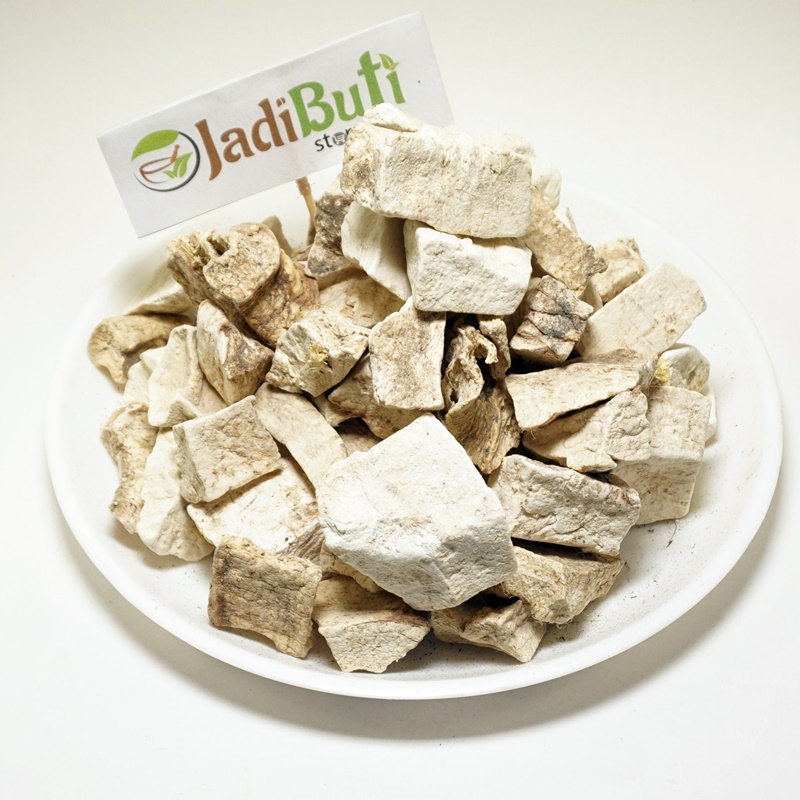
Vidari Kand – विदारी कंद – Indian Kudzu – Pueraria tuberosa
₹110.00 – ₹870.00Quick ViewVidari Kand (Pueraria tuberosa)
Other Names: Indian kudzu, Vidarikand, Vidhari Kanda
Description: Vidari Kand is a perennial climbing plant with tuberous roots, native to India. It belongs to the legume family and has been used in traditional Ayurvedic medicine for its medicinal properties.
Health Benefits: Vidari Kand is believed to have a variety of health benefits due to its rich content of bioactive compounds such as flavonoids, saponins, and isoflavones. It is used as an adaptogen, a natural aphrodisiac, and is believed to improve function and fertility in both men and women. It is also used to treat a range of health conditions such as diabetes, respiratory disorders, skin diseases, and more.
Forms: Vidari Kand is available in various forms such as Natural & powder.
Precautions: Vidari Kand is generally safe when used appropriately. However, it may interact with certain medications and should be used with caution in pregnant and breastfeeding women. As always, it is important to consult a qualified healthcare professional before using Vidari Kand for medicinal purposes.
